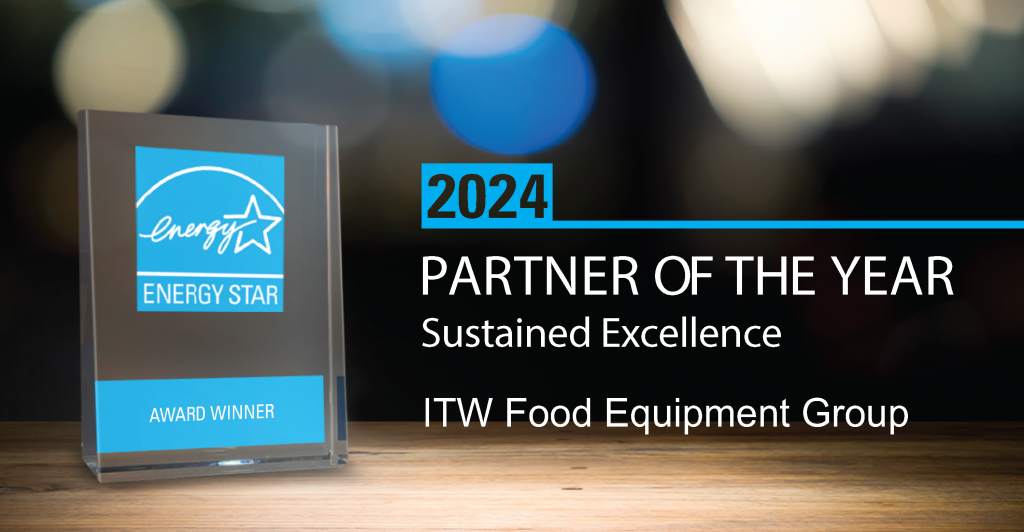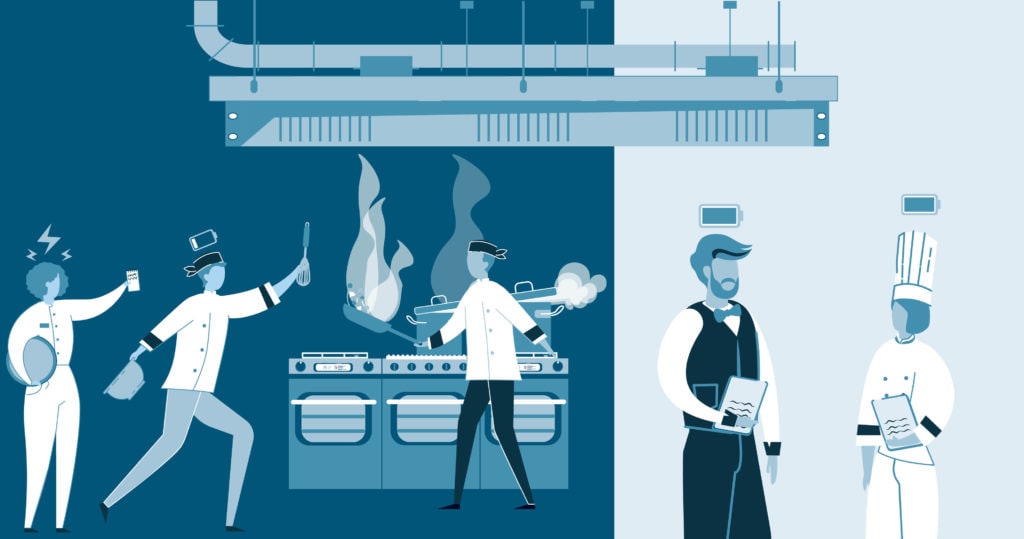
Gone are the days where only employees of very large companies could reap the benefits of in-house workplace dining. Corporate dining is evolving at rapid speed and more companies – both large and small – are strategizing on how to offer this perk to their employees.
Offering some form of foodservice has benefits to the overall company as well – healthier employees, more productivity and higher quality recruits are just a few of the by-products that have come from offering a workplace dining option.
It’s hard to pinpoint when business and industry dining actually was introduced but it seems to have history back to the early 1900s when General Electric created one of the first large office parks in Cleveland, Ohio, complete with a cafeteria for their factory workers.
Although the offerings seem meagre by today’s standards – soup, sandwiches, coffee and milk – it was a major step in offering perks to employees. Large institutions, with thousands of employees, many of them in the financial and insurance worlds started to add in partially subsidized large cafeterias in an effort to keep their employees on site. These spaces followed the older cafeteria model with a few “hot lunch” entrée selections and possibly a salad bar, focusing not so much on healthy employees, but more on increased productivity by encouraging workers to stay on campus.
Free perks
In the early 2000s, Google not only changed how the internet works but also revolutionized the way employees eat, with the perk of providing free food to their employees at all hours of the day throughout their various offices. The Google space was designed with creativity and collaboration in mind – providing cafés throughout the office and seating for employees to innovate together and to spark conversations, which the company coined “casual collisions”, among those who may not have had a chance to interact through their day-to-day operations.
Many Silicon Valley companies followed suit – LinkedIn, Facebook and Twitter being notable examples – using food as a recruitment tool and an opportunity to compete for talent. “The cafeteria became the first place a new recruit would be taken,” says Josh Smith of consultancy firm Next Step Design.
It used to be that only very large corporations had the budget and space to accommodate a workplace dining program, but that has changed. With Millennials now overtaking Baby Boomers as the largest generation in the workforce, the workplace is in need of a rethink. Millennials have different expectations of what a workplace should offer them, and usually a food component is a highly lauded perk.
“From a broad perspective, we are seeing a shift where smaller companies – both established and start-up – are looking at how to provide these amenities to their staff,” says Joseph Schumaker FCSI, principal design consultant for SCG FoodSpace. “They used to have to have a staff of over 1,000. These smaller companies are trying to figure out how to compete for talent.”
Since there are now various sized companies providing this perk, the ways that food is being offered has also morphed into a few different directions. There are three main trends that are happening in order to make it easier – and more cost effective – to provide food at a subsidized rate, or even gratis, in the workplace.
First, the workspaces that can afford their own kitchen need to become multifunctional to maximize the selections on offer. For a recent project, Amy Hegarty FCSI, principal at Foodservice Consultants Studio, helped a client think through equipment that could serve multiple purposes. “There needs to be flexibility to easily change menu items,” she says. You don’t want to be stuck with just one way of doing things. Project down the road what they need. For example, get a pasta station that can do pasta and stir-fry and rice.”
Nahum Goldberg FCSI of NG Associates recommends investing in energy efficient tools that may be costly up front, but will save more money in the long run. “You also want to make sure to offer your chefs and culinary operators a great culinary platform to work with,” he says.
All in the prep
For those companies that can’t create a full-scale operation design, Schumaker is seeing a trend in the catered cafeteria that has a full service front of house, but without an actual kitchen on site. The prep is being done at commissary kitchens and then delivered to the workplace. This allows smaller companies to offer food in a well-designed dining space for employees to interact with each other but without the investment in the back-of-house equipment.
Hegarty is seeing many of the companies with a smaller footprint creating smaller cafés, coffee shops or even frozen yogurt shops. Companies that only have pockets of space throughout the office, or don’t want to give up a large footprint, can still create various areas throughout the office to interact without the investment in a massive build out. Often spaces like this will appear in lobbies or outside frequent meeting spots.
Companies that simply can’t invest in an on-site food operation of that level are looking to companies like Fooda (currently operating in seven major US cities) that provide pop-up restaurants or individual meal delivery services (that employers are subsidizing) for employees. Groupon uses them and is able to bring in food from some of the best restaurants across Chicago.
Companies are also looking into bringing in food trucks or choosing days of the week to order from local restaurants or caterers. As a minimum, many will stock cabinets or refrigerators with snacks to provide some sort of “perk” to their employees.
Healthy variety
One thing that is common across all dining platforms, whether food trucks or full-scale kitchens, is that people are demanding both variety and healthy options when it comes to the food offered. Employees want to know what they are eating and employers want to make sure they are fueling a healthy lifestyle. This leads to more vegetable options, with those healthier alternatives often being the most visible.
Healthy proteins, larger salad bars and more multicultural options are becoming increasingly common. “In many cases, the outside food world – restaurants – are driving some of these trends,” says Smith. “People are more aware of the farm-totable movement and want to have those elements wherever they eat.”
Mirit Cohen, executive chef at computer software company Adobe, believes that variety is the key to providing for a diverse workforce. “Companies everywhere have recognized the importance of having a diverse and inclusive workforce,” she says. “Since food is so personal and cultural, it is the first stop when trying to ensure that every current and potential employee feels welcome at work.”
Just as much consideration is being given to the design of the dining space as to the food. If the goal is to have more productive employees, and give opportunities for employees to interact outside of their offices and cubicles, the space needs to reflect that.
“It’s important to understand the workings of the whole building [when it comes to designing a food program]. How far people are from the cafeteria, for example. I like to understand how people are moving through the space,” says Hegarty. “It’s a huge deal now to have areas to have discussions – accommodate people who want private time or those who want to meet away from the main office spaces.”
Many offices are creating and dispersing their seating throughout the space if they are able. Lounge seating is a big trend, at the moment, as are bright colors, funky furniture and other elements that make the area feel less like their workspace and more like a restaurant or lounge. “If the dining environment is attractive and the seating is designed for various atmospheres, with the right music and the right views, it can go a long way,” says Goldberg.
From food to design, there is no doubt that workplace dining has become key to the corporate culture of many institutions. Although there may always be differences in the way a longstanding financial institution and a Silicon Valley technology start-up executes their workplace dining, it seems it is increasingly becoming part of company culture to those companies able to integrate it into their business model.
The benefits will remain great – healthier employees and increased productivity can only lead to positives for the bottom line of any business.
Samantha Lande




